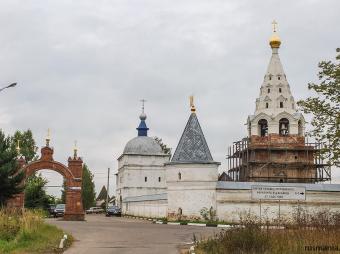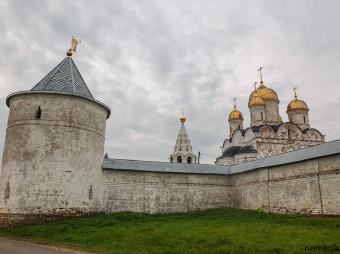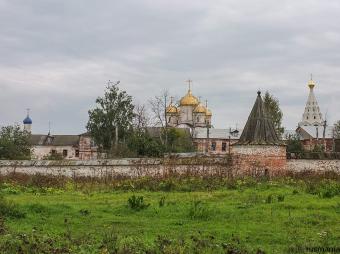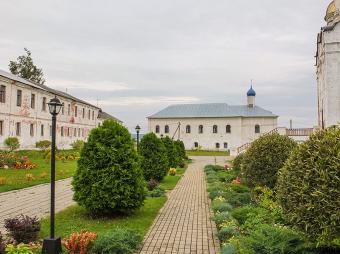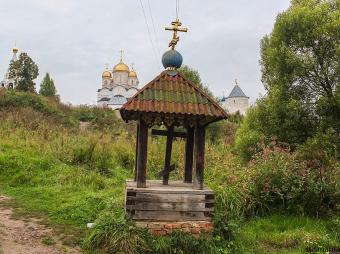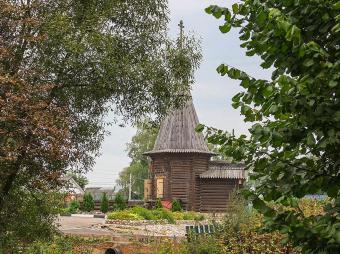Around the City
Luzhetsky Monastery
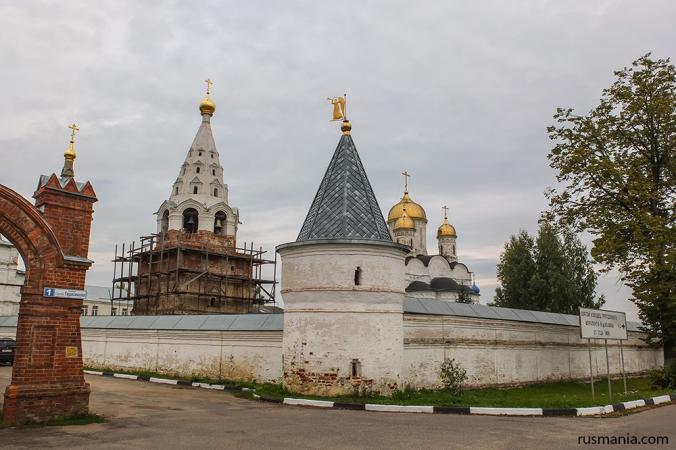
The Luzhetsky Monastery is more formally known as the Ferapontov Luzhetsky Monastery after its founder St Ferapont of Belozersk. Prince Andrey of Mozhaisk invited St Ferapont to establish a monastery in Mozhaisk in 1408 and St Ferapont chose a hill on the bank of the River Moskva for its location. At one point in time the Luzhetsky Monastery was just one of 18 monasteries in Mozhaisk but now it is the only working monastery in city. Like many Russian monasteries of the time, Luzhetsky Monastery also served a defensive function and is surrounded by thick fortified walls with six towers. In its long history the monastery has suffered many hardships. In 1617 it was sacked by Polish interventionists during the times of troubles. In 1812 when Mozhaisk was occupied by French troops, the monastery was used by General Junot to house the 8th Corps. More recently in 1918 its territory was used by the Red Army until it was eventually closed in 1929. It was subsequently used as a prison colony for street children and then a furniture factory. Restoration work was carried out in the 1960s but the monastery was only returned to the Church in 1994. Now the monastery has been further restored without losing its feeling of ancientness. Its location in a picturesque setting overlooking fields and the River Moskva makes it even more beautiful. There is also a holy spring located just outside the monastery, as well as a small wooden chapel dedicated to St Ferapont slightly to the north on the stream.
Holy Transfiguration Gate-Church
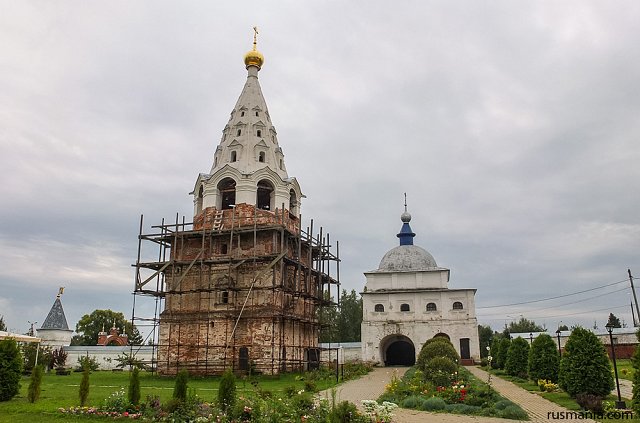 The main entrance to the monastery is through the Southern Holy Gates, over which the Holy Transfiguration Gate-Church has been erected. The simple white-stone church was built between 1590 and 1610, however the top part of the walls date from the mid-17th century and the dome top was put in place after 1812. A three-tier bell tower with a tent dome stands between the gate-church and the Nativity of the Virgin Mary Cathedral. Construction of the tower started in 1673 and took 19 years to complete. To the east of the bell tower is the monastery's ancient necropolis.
The main entrance to the monastery is through the Southern Holy Gates, over which the Holy Transfiguration Gate-Church has been erected. The simple white-stone church was built between 1590 and 1610, however the top part of the walls date from the mid-17th century and the dome top was put in place after 1812. A three-tier bell tower with a tent dome stands between the gate-church and the Nativity of the Virgin Mary Cathedral. Construction of the tower started in 1673 and took 19 years to complete. To the east of the bell tower is the monastery's ancient necropolis.
Nativity of the Virgin Mary Cathedral
 The Nativity of the Virgin Mary Cathedral is the monastery’s main place of worship and is also the oldest building in the monastery, having been consecrated in 1547. It is built in the cube four-pillar style with five golden domes. Previously St Ferapont of Belozersk's Church stood next to the cathedral and housed the saint's relics. However the church was demolished in the Soviet era and only its fundaments remain. The relics of St Ferapont are now housed in the cathedral itself.
The Nativity of the Virgin Mary Cathedral is the monastery’s main place of worship and is also the oldest building in the monastery, having been consecrated in 1547. It is built in the cube four-pillar style with five golden domes. Previously St Ferapont of Belozersk's Church stood next to the cathedral and housed the saint's relics. However the church was demolished in the Soviet era and only its fundaments remain. The relics of St Ferapont are now housed in the cathedral itself.
Presentation of Virgin Mary Church
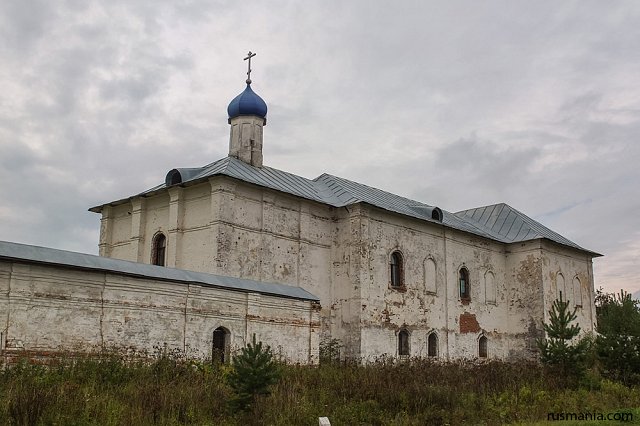 Next to the northern walls of the monastery is the white-stone refectory containing the Presentation of Virgin Mary Church. It dates from the 16th century but was damaged by fire in the 17th century and rebuilt afterwards. It was further restored in the 1990s after the monastery was returned to the Church.
Next to the northern walls of the monastery is the white-stone refectory containing the Presentation of Virgin Mary Church. It dates from the 16th century but was damaged by fire in the 17th century and rebuilt afterwards. It was further restored in the 1990s after the monastery was returned to the Church.
| Location | 1 Ulitsa Gerasimova |
|---|

 History
History